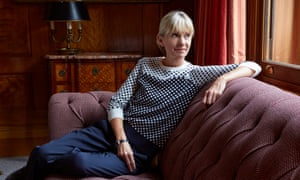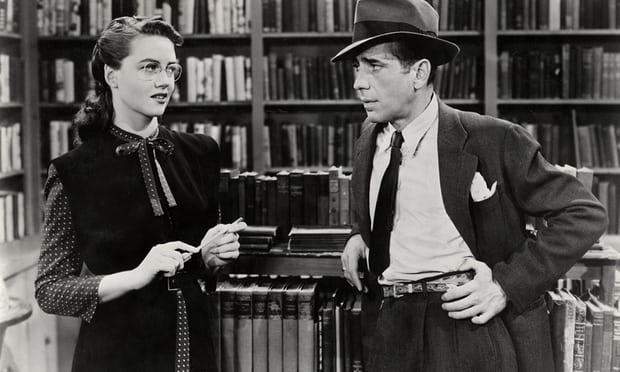The Guardian – Analysis finds proportion of female authors and characters fell after 19th century, with male authors remaining ‘remarkably resistant’ to writing women.
Women in novels have tended to “feel”, while men “get”; women smile or laugh, while men grin or chuckle. An analysis of more than 100,000 novels spanning more than 200 years shows how gendered even seemingly innocuous words can be – as well as revealing an unexpected decline in the proportion of female novelists from the mid-19th to the mid-20th century.
Academics from the universities of Illinois and California at Berkeley used an algorithm to examine 104,000 works of fiction dating from 1780 to 2007, drawn mostly from HathiTrust Digital Library. The algorithm identified both author and character genders. The academics expected to see an increase in the prominence of female characters in literature across the two centuries. Instead, “from the 19th century through the early 1960s we see a story of steady decline,” write Ted Underwood, David Bamman and Sabrina Lee in their paper The Transformation of Gender in English-Language Fiction, which has just been published in the Journal of Cultural Analytics.
As well as the drop in the number of characters who are women or girls, they also found “a fairly stunning decline” in the number of books written by women in the first half of the 20th century, writing that “the proportion of fiction actually written by women … drops by half (from roughly 50% of titles to roughly 25%) as we move from 1850 to 1950.”
The academics were so surprised by these findings, “in the very period when we might expect to see the effects of first-wave feminism”, that they initially suspected an error in their methods. They ran further tests, and found they tallied.
“Women go from representing almost half the authors of fiction to barely a quarter. If this trend is real, it is an important fact about literary history that ought to be foregrounded even, say, in anthology introductions. But the story has not been widely publicised,” they write. “It appears that scholars of each period are able to see the possibility that female authorship was declining in their own period. But no one has been willing to advance the dismal suggestion that the whole story from 1800 to 1960 was a story of decline.”
The academics speculate that one reason for the drop of female authors, which reversed around 1970, could be the “gentrification” of the novel. In the mid-19th century, novel-writing was not a “high-status career”, but as it increasingly became so, it became more desirable to male writers. They also point out that while representation of women in fiction declined over the period, other categories of writing such as non-fiction saw “an enormous expansion” of female writers. “It is not hard to see how expanding opportunities on this scale might have lured women away from the novel,” they write.
The decline in women writing is part of the reason for the drop in women characters. According to the academics’ analysis, in books by men, women occupy on average just a quarter to a third of the character-space. In books by women, “the division is much closer to equal”. The analysis finds: “This gap between the genders is depressingly stable across 200 years.”
Kate Mosse, the bestselling historical novelist and founder of the Women’s prize for fiction, said that she was not surprised by the results. “When we were setting up the prize, we discovered that when a book by a woman won a prize, it was more likely to have a male protagonist,” she said. “This huge piece of research backs that up.”
Mosse pointed to “a sea change from the Enlightenment through to Victorian values, so women are freer in the time of Jane Austen or Mary Shelley or Ann Radcliffe, but then Victorian values – the idea of the angel in the home – take over. And then criticism becomes a discipline. It’s a male discipline, and it’s therefore not surprising to me that women as writers lose their positions, because it’s men writing about male writers, and it starts to inch out women. You see this in history, and in music – it’s equal, and then when criticism starts to become important, women’s contributions are undervalued.”

Analysing the 104,000 novels in the HathiTrust archive, and looking at vocabulary ascribed to characters, the researchers found that earlier volumes contained gendered language. In early 19th-century novels, men were more likely to have “houses” and “countries”, while women had “private chambers”, “apartments”, or “rooms”. By the late 20th century, however, “house” had become more associated with women characters. Words such as “heart”, “tears”, “sighs”, “smiles”, and “spirits”, were “gendered feminine” in the 19th century, the algorithm revealed, with “only a few subjective nouns ascribed more often to men; the primary one is passion, which is sometimes a 19th-century euphemism for lust”.
While both fictional men and fictional women were equally likely to “read”, men have historically been more likely to have “got” things, and women more likely to have “felt”. By the mid-20th century, words for mirth such as “smile” and “laugh” were more likely to be applied to female characters, while “mid-century men, apparently, can only grin and chuckle”.
“This gendering of mirth peaks in the years before and after the second world war, and Raymond Chandler is a typical expression of its consequences for men. His male characters have a habit of grinning in an uneasy, laconic way. ‘He grinned. His teeth had a freckled look,’ in Red Wind. ‘He grinned. His dentist was tired of waiting for him,’ in The Pencil. Chandler’s grins are commonly followed by a cynical chaser about the character’s appearance, to make clear that masculine humour is a thin veneer stretched over menace,” the academics write.
Overall, the researchers found that gender divisions between characters have “become less sharply marked” over the last two centuries, with “very different language” used for men and women in 19th-century novels compared to the present, when “the actions and attributes of characters are less clearly sorted into gender categories”.
They reiterate, however, that this blurring of the boundaries of gender as fiction moves into the 20th century “doesn’t seem to have been associated with greater emphasis on women as characters. On the contrary, their prominence declines across the same period.” And “men remain – on average, as a group – remarkably resistant to giving women more than a third of the character-space in their stories.”


